
A Midsummer Night's Dream is a comedy play written by William Shakespeare in about 1595 or 1596. The play is set in Athens, and consists of several subplots that revolve around the marriage of Theseus and Hippolyta. One subplot involves a conflict among four Athenian lovers. Another follows a group of six amateur actors rehearsing the play which they are to perform before the wedding. Both groups find themselves in a forest inhabited by fairies who manipulate the humans and are engaged in their own domestic intrigue. A Midsummer Night's Dream is one of Shakespeare's most popular and widely performed plays.
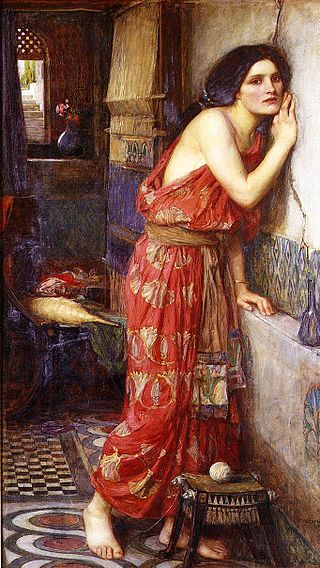
In Greek mythology, Pyramus and Thisbe are a pair of ill-fated lovers from Babylon, whose story is best known from Ovid's narrative poem Metamorphoses. The tragic myth has been retold by many authors.

The mechanicals are six characters in A Midsummer Night's Dream who perform the play-within-a-play Pyramus and Thisbe. They are a group of amateur and mostly incompetent actors from around Athens, looking to make names for themselves by having their production chosen among several acts as the courtly entertainment for the royal wedding party of Theseus and Hippolyta. The servant-spirit Puck describes them as "rude mechanicals" in Act III, Scene 2 of the play, in reference to their occupations as skilled manual laborers.
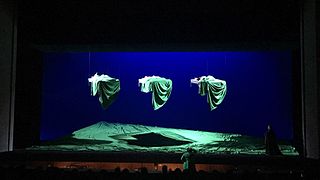
A Midsummer Night's Dream, Op. 64, is an opera with music by Benjamin Britten and set to a libretto adapted by the composer and Peter Pears from William Shakespeare's play, A Midsummer Night's Dream. It was premiered on 11 June 1960 at the Aldeburgh Festival, conducted by the composer and with set and costume designs by Carl Toms. Stylistically, the work is typical of Britten, with a highly individual sound-world – not strikingly dissonant or atonal, but replete with subtly atmospheric harmonies and tone painting. The role of Oberon was composed for the countertenor Alfred Deller. Atypically for Britten, the opera did not include a leading role for his partner Pears, who instead was given the comic drag role of Flute/Thisbe.
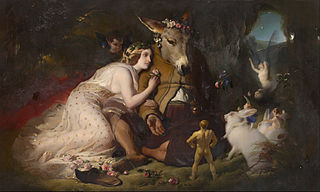
Nick Bottom is a character in Shakespeare's A Midsummer Night's Dream who provides comic relief throughout the play. A weaver by trade, he is famously known for getting his head transformed into that of a donkey by the elusive Puck. Bottom and Puck are the only two characters who converse with and progress the three central stories in the whole play. Puck is first introduced in the fairies' story and creates the drama of the lovers' story by messing up who loves whom, and places the donkey head on Bottom's in his story. Similarly, Bottom is performing in a play in his story intending it to be presented in the lovers' story, as well as interacting with Titania in the fairies' story.
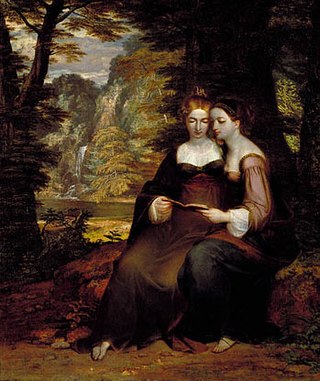
Helena is one of four young lovers – the others being Demetrius, Lysander, Hermia – featured in William Shakespeare's play A Midsummer Night's Dream.
Peter Quince is a character in William Shakespeare's A Midsummer Night's Dream. He is one of the six mechanicals of Athens who perform the play which Quince himself authored, "The Most Lamentable Comedy and Most Cruel Death of Pyramus and Thisbe" for the Duke Theseus and his wife Hippolyta at their wedding. Titania's Fairies also watch from a distance: Moth, Peaseblossom, Cobweb and Mustardseed. His name is derived from "quines" or "quoins", which are interlocked oversized corner blocks used by masons to add extra strength at corners and edges of stone walls.

Snug is a minor character from William Shakespeare's play A Midsummer Night's Dream. He is a joiner who comes from Athens who is hired by Peter Quince to play the part of the lion in Pyramus and Thisbe. When he is first assigned the part, he is afraid it may take him a while to finally remember his lines. Bottom offers to play the part of the lion, but he is rejected by Quince, who worries that his loud and ferocious roar in the play will frighten the ladies of power in the audience and get Quince and all his actors hanged. In the end, the lion's part is revised to explain that he is in fact not a lion and means the audience no harm.

Tom Snout is a character in William Shakespeare's A Midsummer Night's Dream. He is a tinker, and one of the "mechanicals" of Athens, amateur players in Pyramus and Thisbe, a play within the play.
Philostrate is a fictional character in a number of literary works, including William Shakespeare's A Midsummer Night's Dream (1596). In that play, he is the Master of the Revels at Theseus' court, meaning he is in charge of his lord's entertainments, making recommendations to Theseus, as well as altering the text of some of the plays performed in his court. Shakespeare may have used this character to poke fun at play censorship in London at the time. In early performances of the play, the actor who played this character probably also played the part of Egeus, Hermia's strict father. There is only one scene in act V where both Egeus and Philostrate are present, and in this scene Egeus' character would have taken all of Philostrate's lines as his own.

Robin Starveling is a character in William Shakespeare's A Midsummer Night's Dream (1596), one of the Rude Mechanicals of Athens who plays the part of Moonshine in their performance of Pyramus and Thisbe. His part is often considered one of the more humorous in the play, as he uses a lantern in a failed attempt to portray Moonshine and is wittily derided by his audience.

A Midsummer Night's Dream is a 1968 British film of William Shakespeare's play A Midsummer Night's Dream, directed by Peter Hall.
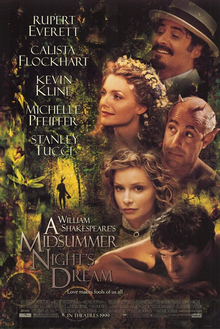
A Midsummer Night's Dream is a 1999 fantasy romantic comedy film written, produced, and directed by Michael Hoffman, based on the 1600 play of the same name by William Shakespeare. The ensemble cast features Kevin Kline as Bottom, Michelle Pfeiffer and Rupert Everett as Titania and Oberon, Stanley Tucci as Puck, and Calista Flockhart, Anna Friel, Christian Bale, and Dominic West as the four lovers.
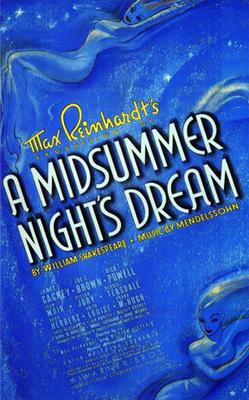
A Midsummer Night's Dream is a 1935 American film adaptation of the Shakespearean play of the same name. It is directed by Max Reinhardt and William Dieterle, produced by Warner Bros., and stars James Cagney, Mickey Rooney, Olivia de Havilland, Jean Muir, Joe E. Brown, Dick Powell, Ross Alexander, Anita Louise, Victor Jory and Ian Hunter. The screenplay, written by Charles Kenyon and Mary C. McCall Jr., is adapted from Reinhardt's Hollywood Bowl production of the play from the previous year.

A Midsummer Night's Dream is a 1909 American film directed by Charles Kent and J. Stuart Blackton, and starring Walter Ackerman and Charles Chapman. It was the first film adaptation of the eponymous play by William Shakespeare. The movie was made during summer 1909, but not released until December 25.
Pyramus and Thisbe is a "mock opera" by the German-born composer John Frederick Lampe on the story of Pyramus and Thisbe. It was first performed at Covent Garden Theatre, London, on 25 January 1745. The anonymous libretto is based on Richard Leveridge's The Comickal Masque of Pyramus and Thisbe (1716), itself inspired by the "play within a play" in act 5 of William Shakespeare's A Midsummer Night's Dream.

The 1970 Royal Shakespeare Company (RSC) production of A Midsummer Night's Dream was directed by Peter Brook, and is often known simply as Peter Brook'sDream. It opened in the Royal Shakespeare Theatre at Stratford-upon-Avon and then moved to the Aldwych Theatre in London's West End in 1971. It was taken on a world tour in 1972–1973. Brook's production of A Midsummer Night's Dream for the RSC is often described as one of the 20th century's most influential productions of Shakespeare, as it rejected many traditional ideas about the staging of classic drama.

A Midsummer Night's Dream is a 2017 film adaptation of the play A Midsummer Night's Dream by William Shakespeare. The film is a modern rendition that relocates the story from ancient Athens to present-day Los Angeles.

Fools and Mortals is a 2017 historical novel by Bernard Cornwell set in Elizabethan London. The protagonist is a younger brother of William Shakespeare.
Midsummer Mechanicals is a 2022 play written by Kerry Frampton and Ben Hales. The story, a sequel to William Shakespeare's A Midsummer Night's Dream, follows the titular troupe of actors, The Mechanicals, attempting to put on a new play at the court of Duke Theseus. The work is aimed towards families and children aged 5-12, making this the first full-scale family-oriented production put on by Shakespeare's Globe.















